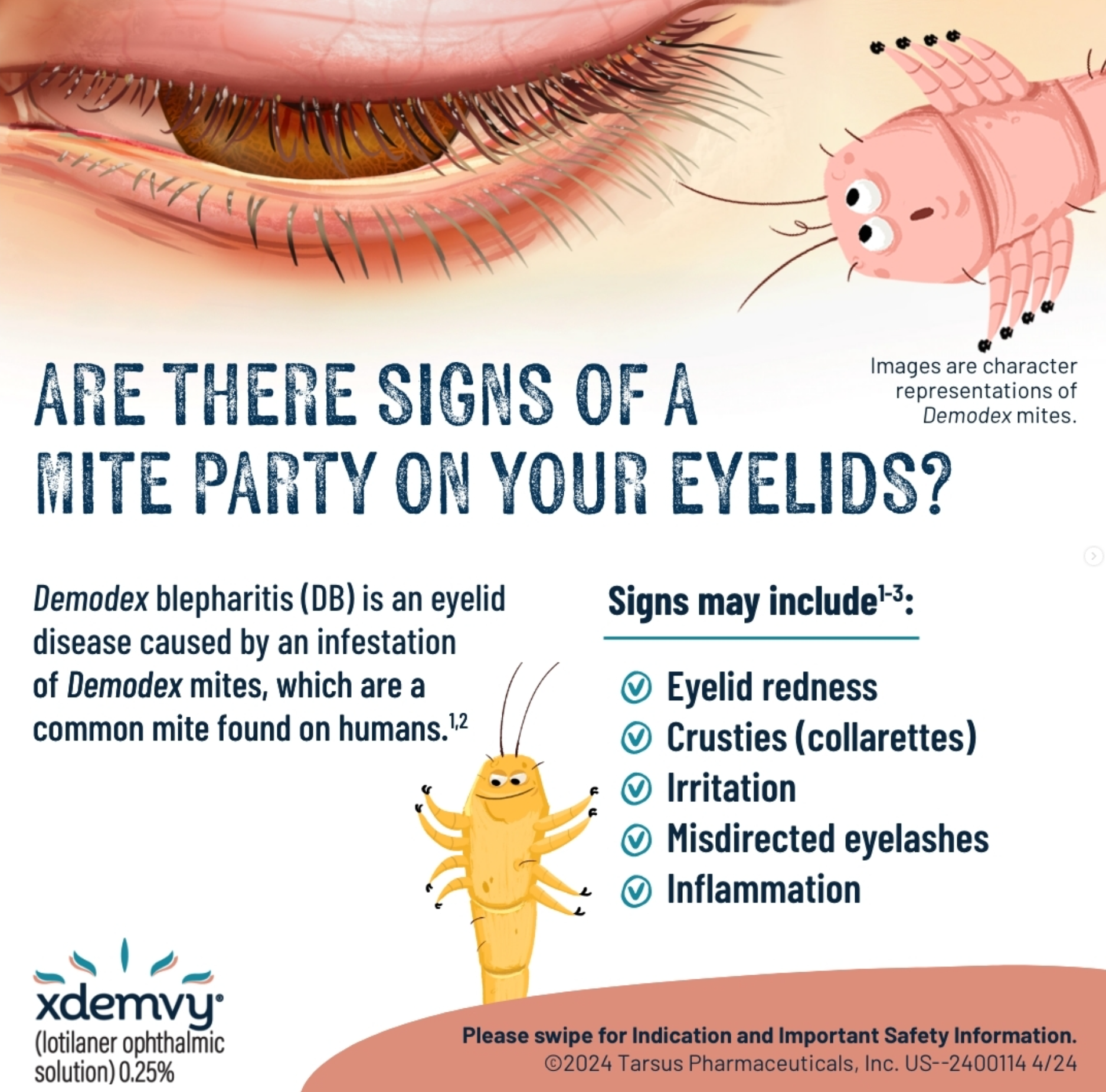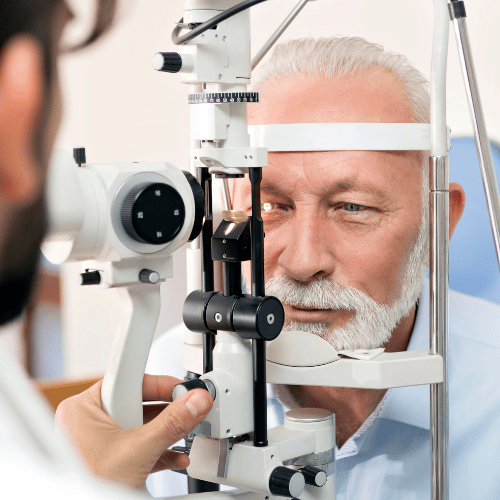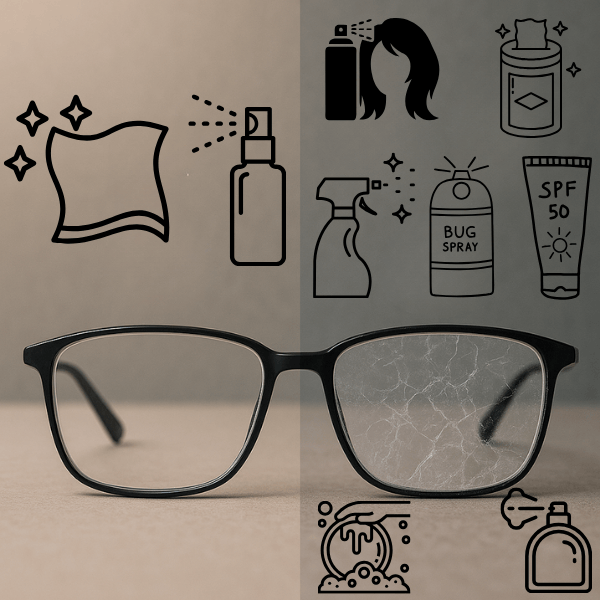The Eye Mite You Have Never Heard of
Waking up with itchy, burning eyelids or crusty lashes? It’s more common than you think, and tiny mites living along your lash line may be the reason. In this post, we’ll explain what these mites are, how they impact your eyes, and how a simple daily routine can bring lasting comfort and clearer vision.
What Are Demodex Mites?

Demodex are tiny (0.3-0.4 mm long), mites that live in the pores of our facial skin. They are particularly fond of the hair follicles of eyebrows and eyelashes, and the oily pores most common on the nose, forehead, and cheeks. Their bodies are covered with scales for anchoring themselves in hair follicles, and the mites have pin-like mouthparts for eating skin cells and oils which accumulate in hair follicles. While it is normal to have Demodex mites on our bodies, some may have them in higher concentrations which can cause problems leading to
blepharitis and
dry eye disease.
Who’s at Risk?
- As you age, you are more likely to harbor an overgrowth of Demodex. The condition is seen in:
-~⅓ of young adults,
-½ of those between 40 and 60
-⅔ of people over 60
- Oily skin, frequent makeup use, and skin conditions like rosacea can create an ideal environment for Demodex mites to thrive.
Common Signs Demodex Mites Are Affecting Your Eyes
These mites can trigger a variety of irritating symptoms, such as:
- Itchiness, burning, or dryness of the eyes and eyelids
- Crusting, redness, swollen eyelids, and eyelash loss
- Blurry vision
- Worsened rosacea or blepharitis, with higher mite counts tied to more inflammation
Effective Ways to Treat Demodex Naturally
- Book a ZEST treatment at MVO
- Use wipes containing tea tree oil or Okra, the only natural substances proven to control Demodex.
- Clean daily, especially first thing in the morning, when mites are most active.
- Replace eye makeup and bedding regularly to avoid re-infestation.
In severe cases, more aggressive in-office treatment may be needed to manage the condition.
Why Daily Cleansing Matters
Without proper cleansing, Demodex mites lay eggs nightly and multiply without interruption, often reaching levels up to ten times higher than normal. Even after they die, these mites leave behind debris that can trigger inflammation and immune responses, keeping your eyes irritated long after the active infestation has ended.
How Well Do Eyelid Wipes Work?
A pilot study showed that just 30 days of daily use of Blephadex™ tea tree eyelid wipes significantly reduced Demodex counts and improved comfort, without affecting the eye surface or microbiota.
An Easy Routine to Keep Demodex Under Control
Step-by-Step Morning Routine
- Begin with clean hands.
- Gently wipe lashes and lashline with a tea tree oil or Okra-based eyelid wipe. At MVO our doctors recommend Blephadex and Zocufoam.
- Thoroughly clean makeup and linens.
Long-Term Routine
- Daily use for the first month to knock down mite levels.
- Then keep it up every other day or as your optometrist recommends.
- Think of it like brushing your teeth, it’s simple, effective, and long-lasting.
While Demodex mites are often harmless, an overgrowth can lead to more problem down the road. Thankfully, in-office treatments and daily eyelid hygiene can make a big difference. If you’re experiencing symptoms, don’t wait. Schedule your eye exam and let us help you find the best solution for your eye health.
Resources:
https://blephadex.com/resources/deomodex/;
https://pubmed.ncbi.nlm.nih.gov/31239200/;
https://www.sciencedirect.com/science/article/abs/pii/S1367048419300311

Written by Dr. Tom Wilk
About the Author:
Dr. Tom Wilk sees patients at his Cochrane location primarily. He developed the “Patient First” approach now adopted by all Doctors and staff at Mountain View Optometry. He obtained his Doctor of Optometry (OD) from the Michigan College of Optometry in 1994, and his B.Sc. from the University of Waterloo. A native of Toronto, Ontario, he came to Alberta in 1998, attracted by the opportunity to start an optometry practice in the only province that allowed ODs to practice within the full scope of their training.











